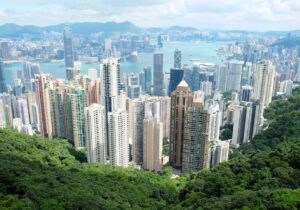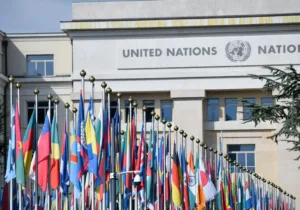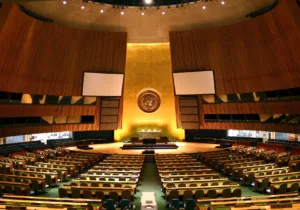When Chief Executive Carrie Lam and Hong Kong’s Legislative Council originally introduced the proposed extradition law in late March 2019, they could never have predicted the firestorm it would set off. Since that time, the world has watched transfixed as Hong Kongers have taken to the streets, seeking to defend basic liberties they believe the proposed bill jeopardizes.
Protests enjoyed so much support and gained so much steam that Carrie Lam had no choice but to table the bill, declaring it officially dead. If the extradition bill had been passed, it would have sacrificed Hong Kongers’ freedom at the altar of Beijing. The proposed law would have created a legal venue to bring politically questionable personalities to China—something it has already done, illegally, with people like the Hong Kong booksellers.
While the bill has died, the protests haven’t. Neither have the actions of Hong Kong law enforcement, who have used tear gas and rubber bullets against the general populace. Their actions betray a sense of fear over the rising tide of defiance—last week they arrested a student (who was later released) for possessing an “offensive weapon.” It was a laser pen. In response, hundreds of Hong Kongers gathered at the harbor front to shine lasers, creating their own show of lights.
But the protestors aren’t just getting pushback from the Hong Kong government. According to press reports, Zhang Xiaoming, director of the Hong Kong and Macau Affairs Office of China’s State Council, recently told a crowd of high-powered Beijing-friendly citizens of Hong Kong that China would intervene if police cannot contain the protests. He also insinuated that the protests bear markings of a “color revolution”—something Beijing authorities are deathly afraid of. There have also been other apparent warnings to Hong Kong emanating from the mainland. This past Tuesday, for instance, there were reports that Chinese police staged an anti-riot drill just across the river in Shenzhen, with police attacking mock protestors dressed in construction hats and face masks. China maintained the drill was a public security measure taken as preparation for an upcoming national celebration in October.
Early Hong Kong protests, which drew millions, have now stabilized to a certain extent, but thousands are still organizing to continue challenging the government. Citizens from all walks of life have joined—ordinary citizens, individuals from the business community, students, members of faith-based groups, and lawyers. Everyone feels that something is at stake for them.
Over time, however, it seems as though the protestors have lost clarity of focus and message, with protestors largely in reaction mode. While demands from protestors were initially modest—requesting that the extradition law be withdrawn—they have morphed over time, with some protesters calling for the removal of Carrie Lam, and others seeking an unclear definition of broader political reforms. Perhaps the clearest demand is that some Hong Kongers believe that it was not enough for Carrie Lam to table the proposed extradition law, but that it must be withdrawn entirely. Calls for an independent investigation of police violence is another reasonable, widely supported demand, which for the time being at least Hong Kong authorities have rejected.
This is an inherent challenge with protest movements—especially those that lack clear leadership. Protesting—whether the protest movements that ousted former South Korean President Park Geun-hye, to various protests like the Women’s March in the US and the ongoing protests in Hong Kong—is inherently murky. All protest movements reveal that the feedback loop between citizens and their government is broken, malfunctioning, or nonexistent.
In short, people take to the streets when they think that there is no other way to be heard.
There is nothing inherently wrong with protests—the right to protest, or freedom of association, is a sacredly held right protected in most of the democratic world’s constitutions, international law, and the UN’s Universal Declaration of Human Rights. It is fair that Hong Kongers do not want to be under a government that they feel is not listening to their voice. After all, it is called “one country, two systems” for a reason. The people deserve to have assurances that their local government will represent them fairly. By all means, they should protest peacefully. However, protesting is one of the least mature forms of democratic expression precisely because when large masses of people are involved, it is easy for the protests’ purpose to get muddled, or to have never been clear in the first place. Momentum starts to pick up, but in no specific direction. At some point, protestors lose focus of why they came out at all.
The Hong Kong government and citizens alike should carefully consider why the protests continue to take place. As they linger, the world is getting the sense that the proposed extradition law merely ignited a deeper desire for freedom and reform that lay dormant in Hong Kongers until the bill was introduced. And the bill itself touched on some of the Hong Kongers’ most fundamental fears—that come 2047 (or before), their freedoms will be subject to the whims of Beijing.
It might not be possible to put this genie back in the bottle.
The international community, especially the US, should consider the role it seeks to play in promoting freedom in Hong Kong over the long run, with an eye toward its policy goals as the promised 2047 return of Hong Kong to China emerges on the horizon.
There is a deep and abiding need for the government of Hong Kong—which although it is sincerely committed to the rule of law, is not a democracy—to take a cold, hard look at its political institutions to determine how to close the broken (or nonexistent) feedback loop between itself and its citizens. This calls for the citizens of Hong Kong to take a long view of their situation. Instead of resorting to any form of violence, they should protest peacefully, advance a clear message, and hold themselves to a standard that bespeaks the very things they protest for—protection of fundamental freedoms through the rule of law—not the things they protest against. The protestors should not forget that they are not merely protesting against something. They are also protesting for something.
If the protestors fail to this, the potential for more violent unrest is almost guaranteed. The ultimate question for Hong Kongers today is not, Do you march? Rather, the more apt question is, Whither do you march?







 Sponsor a student for Christianity & National Security 2024
Sponsor a student for Christianity & National Security 2024